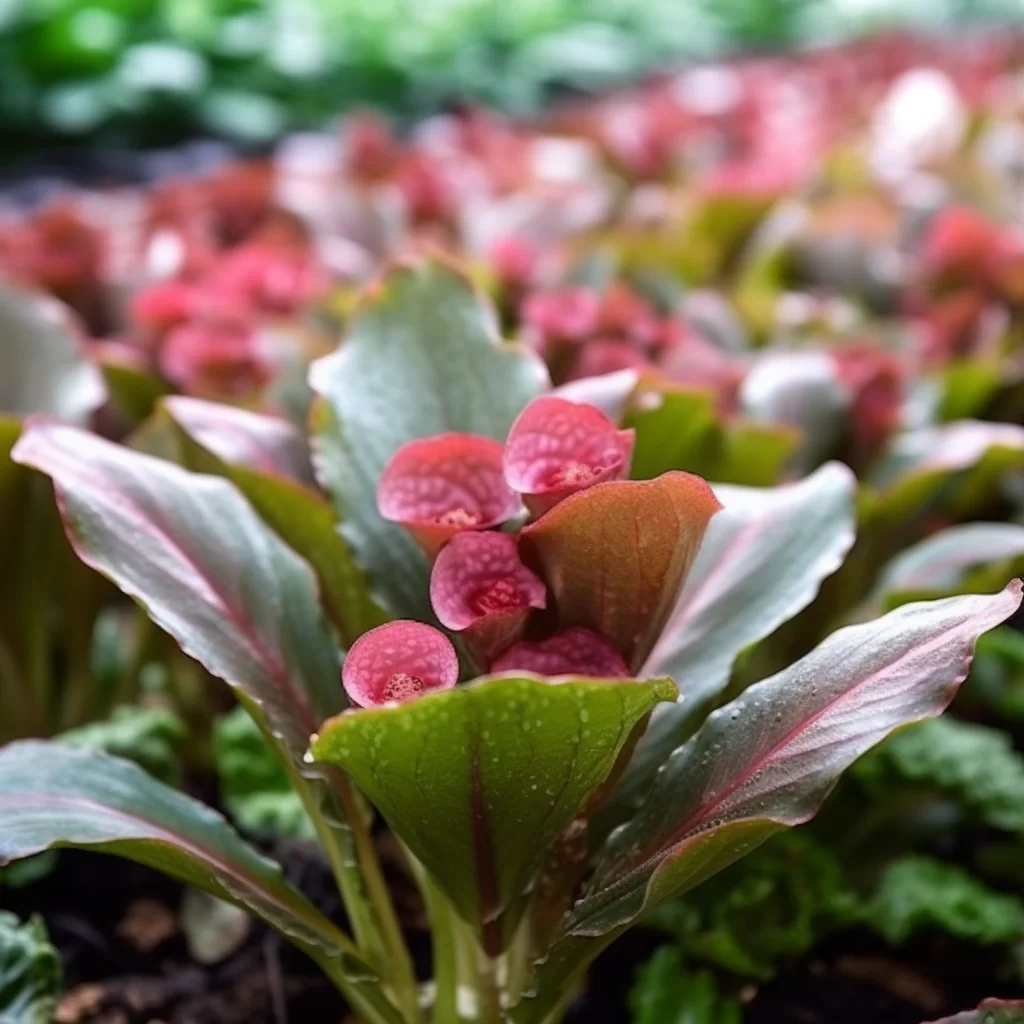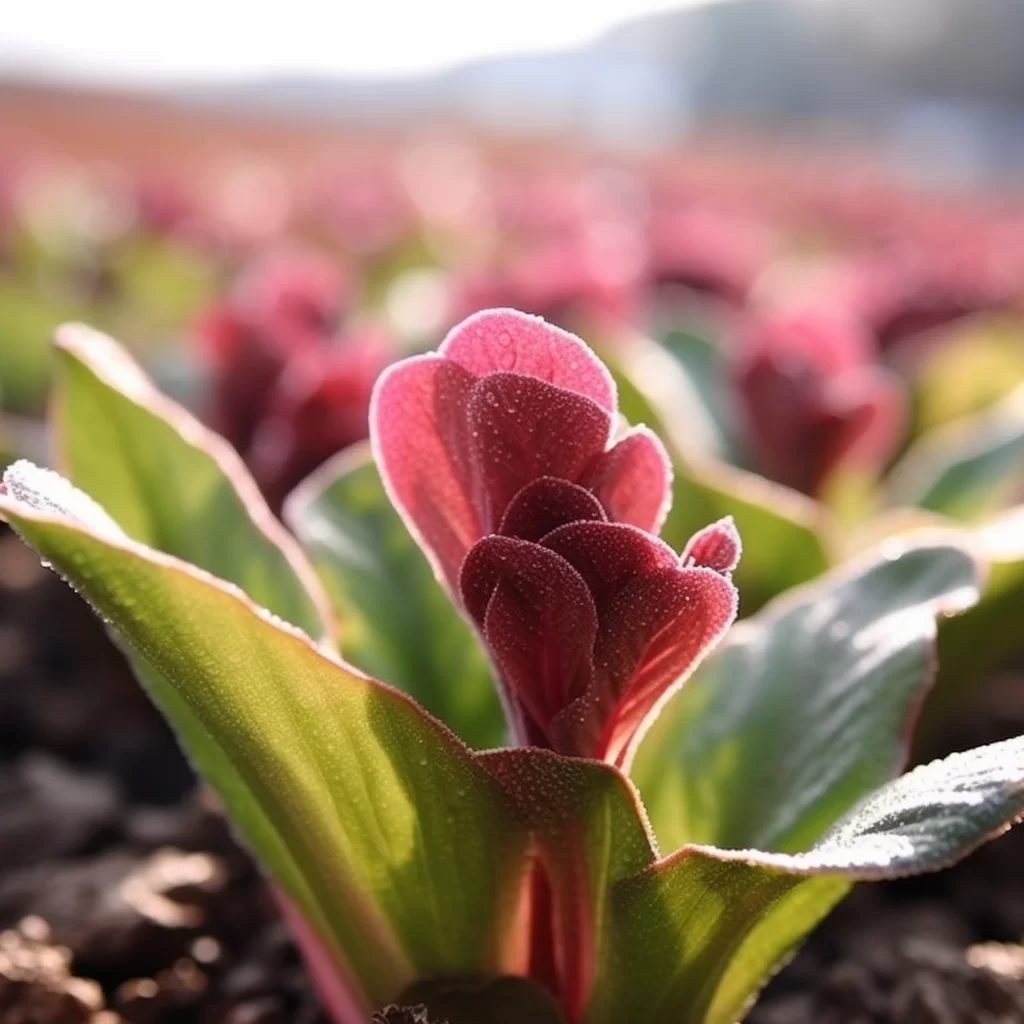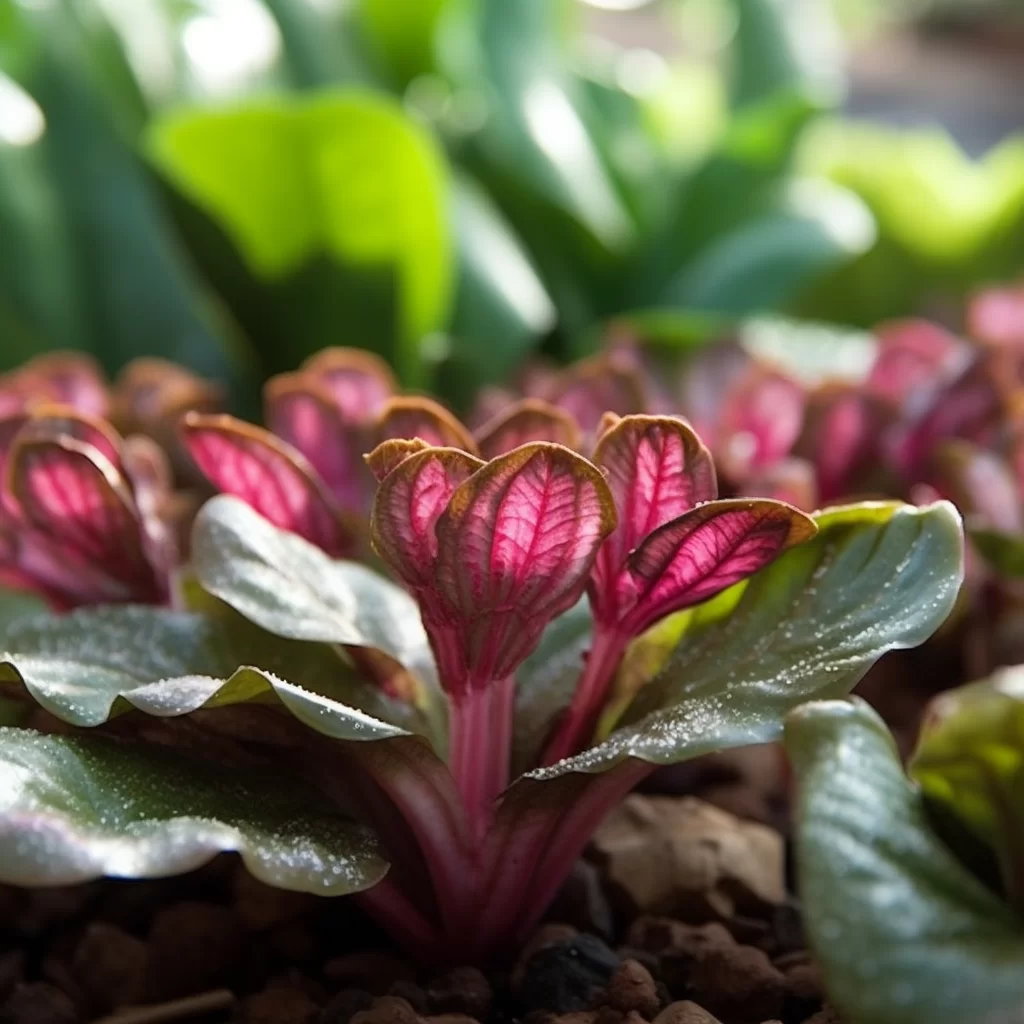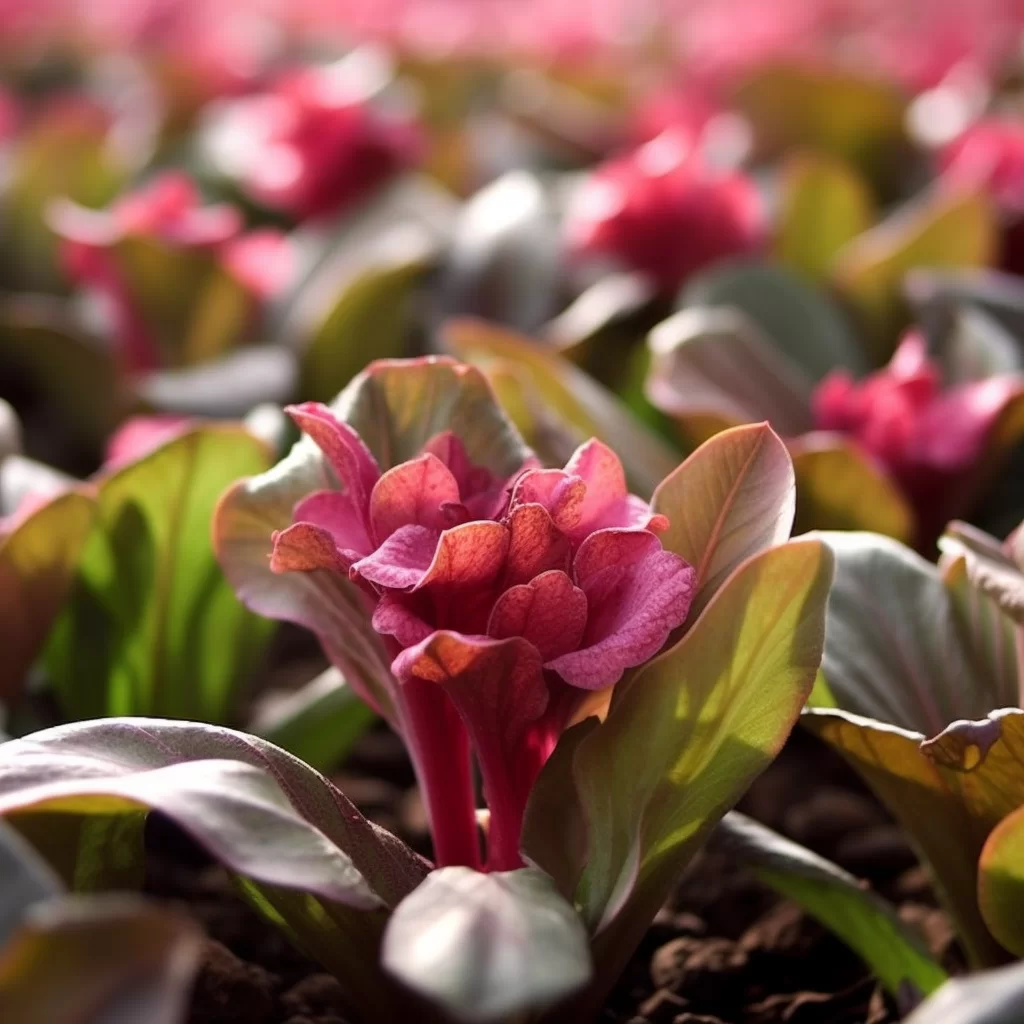Story of Day :
Contents
The Ultimate Guide to Bergenia Plant Care Tips
Bergenia is an excellent choice for those who want to add some greenery to their garden without much upkeep.
Its hardiness and low maintenance nature make it the perfect plant for beginners or anyone who has a busy schedule but still wants a stunning garden.
With bergenia, you can enjoy beautiful foliage and blooms year after year, without worrying about spending too much time on pruning or watering.If you’re looking to add some color and texture to your outdoor space, bergenia is the way to go.
This plant not only requires minimal care but also provides gorgeous flowers that come in varying shades of pink, red and white that bloom during springtime.
Bergenia’s large leaves provide a lush backdrop for other colorful plants in your garden while giving off an elegant look all year round.
Whether you are trying out gardening for the first time or have limited time on your hands, adding bergenia will give you a low maintenance yet beautiful addition to your outdoor space.
What is Bergenia?
Bergenia, a flowering plant genus native to Asia, is popularly called pigsqueak.
Its distinctive features are its sizeable and sturdy leaves and clusters of pink or white flowers that bloom in the spring.
These perennials can grow up to 2 feet tall and wide, making them perfect for adding a touch of elegance to borders, rock gardens, or as ground cover. The plants’ thick foliage makes them an excellent choice for landscaping as they provide an attractive backdrop for other plants.
The plants’ thick foliage makes them an excellent choice for landscaping as they provide an attractive backdrop for other plants.
Also, their leathery leaves not only look beautiful but also survive harsh weather conditions.
Besides being aesthetically pleasing, bergenia is also used medicinally in traditional Chinese medicine due to its anti-inflammatory properties that alleviate colds and coughs.
Overall, with their versatility in function and beauty combined with medicinal properties tied up into one package make Bergenia species a desirable addition to any garden or landscape project!
Bergenia Plant Care Tips
If you’re looking for a low-maintenance plant that can add color and texture to your garden, bergenia is an excellent choice.
These hardy perennials are incredibly easy to care for and require little attention once they’re established.
This makes them a great option for busy gardeners who want to enjoy the beauty of plants without spending too much time on upkeep.To keep your bergenia thriving, there are a few basic tips you should follow.
First, make sure it’s planted in well-draining soil that’s rich in organic matter.
Bergenia prefers partial shade but can also handle full sun if it’s not too hot.
They don’t need much water, so avoid overwatering them as this can cause root rot.
Lastly, remove any dead or damaged leaves regularly to promote healthy growth and prevent disease spread.
By following these simple guidelines, you’ll be able to enjoy the beauty of your bergenia plant with minimal effort!
- Light: Bergenias prefer partial shade but can tolerate full sun in cooler climates.
- Soil: These plants prefer well-drained soil with plenty of organic matter.
They do best when the soil pH is slightly acidic.
- Water: Bergenias do not like wet feet so make sure they have good drainage.
Water regularly during the growing season but reduce watering in the winter when they go dormant.
- Fertilizer: Fertilize once a year in early spring with an all-purpose slow-release fertilizer.
- Mulch: Apply a layer of mulch around your bergenias in the fall to protect their roots from freezing temperatures during the winter months.
Bergenias Propagation Tips
If you’re a fan of bergenias, you’ll be pleased to know that propagating them is an absolute breeze.
There are a few methods to choose from, so you can select the one that works best for your skill level and resources.
Generally speaking, it’s possible to propagate bergenias by division or cuttings.
Dividing them involves separating new plants from the parent plant’s roots and planting them in separate containers.
Cuttings involve taking sections of stems or leaves and rooting them in water with some rooting hormone before transplanting into soil.
Regardless of which method you choose, propagating your own bergenias guarantees a steady supply of these gorgeous plants for years to come.Whether you’re an experienced gardener or just starting out, propagating bergenias is straightforward and simple enough for anyone to try their hand at it successfully.
Whether through division or cuttings, there are various ways to create new plants from one mature specimen without too much fuss or expense involved.
In essence, dividing requires carefully removing the root system so that each section has its own set of roots while cuttings involve snipping off individual portions of stems and leaves before letting them root in water with some rooting hormone added for extra measure before transplanting into soil once they’ve taken root properly enough not be disturbed anymore during transplantation which will ensure strong growth early on after planting has taken place within your garden space!
- Division: Divide mature plants in the spring or fall and replant them elsewhere in your garden.
- Cuttings: Take stem cuttings in the summer and root them in a moist potting mix.
- Seeds: Collect seeds from your plants after they have finished blooming.
Sow them indoors or outdoors in the fall.
Bergenias Companion Planting Tips
Bergenias are a versatile plant that can greatly enhance the beauty and functionality of any garden.
They make great companions for other perennials such as hostas, heucheras, astilbes, and ferns, and can contribute to a diverse range of colors, shapes, and textures that will keep your garden interesting all season long.
Additionally, they are perfect for pairing with bulbs like daffodils, tulips, and crocuses which bloom at different times throughout the year.
Whether you’re aiming to create a cohesive color scheme or just want to mix things up with an eclectic mix of plants and flowers, Bergenias are sure to complement any garden.One of the main benefits of planting Bergenias in your garden is their ability to serve as an anchor plant for other perennials.
Because Bergenias have large leaves that grow close to the ground they help create a visual base upon which other plants can be layered.
This enables you to build depth in your garden while maintaining balance between different types of plants without overcrowding or overwhelming them.
Furthermore, their hardy nature makes them ideal companions for bulbs offering protection from harsh weather conditions whilst providing attractive foliage even when not in flower themselves.
Ultimately if you’re looking for an adaptable perennial that will enhance both aesthetic appeal as well as practicality within your outdoor space then look no further than this versatile gem!
Bergenias Common Problems
Bergenias are a popular choice among gardeners due to their remarkable resistance to pests.
However, they are not entirely impervious to fungal infections such as powdery mildew.
To keep your bergenias healthy and disease-free, it’s essential to ensure that they receive sufficient air circulation.
Proper spacing between plants is vital in promoting good air movement around them and reducing the likelihood of mildew formation.If you do come across signs of fungal infection on your bergenias, timely action is crucial.
Remove any affected plant parts or leaves right away before the disease can spread further.
Prevention is always better than cure when it comes to gardening, so make sure you follow proper care instructions for bergenias and keep an eye out for any potential issues that may arise along the way.
By doing so, you can enjoy a beautiful and thriving garden free from pesky pests and diseases!
Bergenia Plant Conclusion
To sum up, if you’re searching for a plant that requires minimal upkeep while boasting stunning greenery throughout the year, bergenias are a fantastic option for your garden.
By simply providing them with the proper care and attention they need during varying seasons (such as adjusting their lighting and watering patterns), these perennials can flourish without much effort on your end!Bergenias are ideal for anyone who wants to add some low-maintenance natural beauty to their outdoor space.
With very little maintenance required, it’s easy to keep them looking great all year round.
Just be sure to provide them with the necessary care depending on the season – from light exposure in winter, to regular watering in summer.
As long as you give them what they need when they need it, your bergenias will thrive and flourish without any major challenges or setbacks!